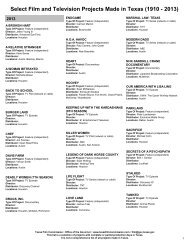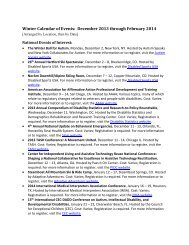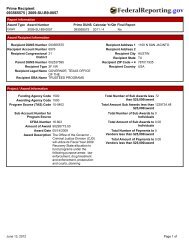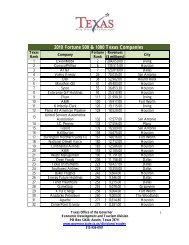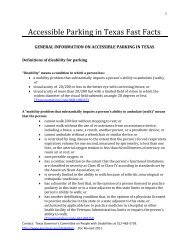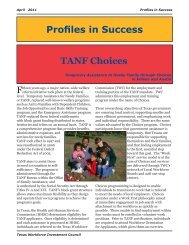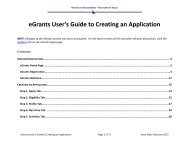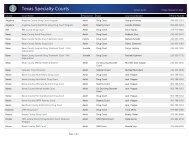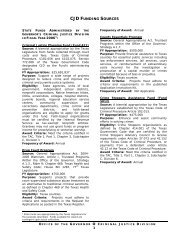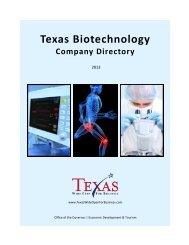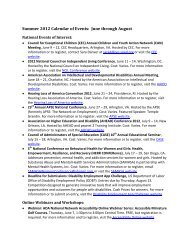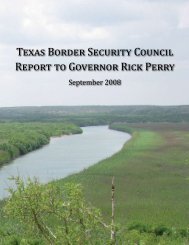People with Disabilities: A Texas Profile
People with Disabilities: A Texas Profile
People with Disabilities: A Texas Profile
Create successful ePaper yourself
Turn your PDF publications into a flip-book with our unique Google optimized e-Paper software.
Concepts, Data Limitations, and Issues<br />
This study analyzes multiple aspects of the population of individuals <strong>with</strong> disabilities at both the national<br />
and state levels using several data sources. As <strong>with</strong> all research, the limitations associated <strong>with</strong> the data<br />
sources determine the specific types of analyses that can be conducted. Additionally, this study<br />
references and uses several technical concepts <strong>with</strong> specific definitions. In this section, the key<br />
concepts, data sources, and the data limitations related to this research are detailed.<br />
Concepts<br />
Several important concepts and categories are used throughout this report and serve as the basis for<br />
many of the analyses. The specific ways in which these concepts and categories are defined determine<br />
the number of individuals in these categories and the description of their characteristics. The concepts<br />
are conventional and frequently used by the Bureau of Labor Statistics (BLS) and the Census Bureau. For<br />
the sake of clarity and replication of the analyses, the important concepts and categories referenced in<br />
this report are discussed in this section.<br />
Disability<br />
Disability is a complex and multidimensional concept. A single, universally accepted definition of<br />
“disability” does not exist. The World Health Organization (2013) considers disability to be an umbrella<br />
term, covering impairments, activity limitations, and participation restrictions. Rather than representing<br />
a dichotomous category in which an individual either has or does not have a disability, degrees of<br />
disability exist, ranging from minor to severe. Additionally, different individuals <strong>with</strong> the same degree of<br />
disability may function at different levels because of personal and environmental factors.<br />
In this report, individuals are considered to have a disability if they report having serious self‐care,<br />
hearing, vision, independent living, ambulatory, or cognitive difficulties on the 2011 American<br />
Community Survey (ACS). Difficulty and disability are therefore used interchangeably. Since the<br />
questions asked on the ACS do not directly address disabilities resulting from mental disorders, the<br />
estimates presented in this report may not include those individuals <strong>with</strong> psychiatric disabilities.<br />
Estimates from the 2010 to 2011 National Survey on Drug Use and Health (NSDUH) indicate that 4.23<br />
percent of individuals 18 or older in <strong>Texas</strong> had serious mental illness in the past year (Substance Abuse<br />
and Mental Health Services Administration, 2012). However, the number of individuals <strong>with</strong> serious<br />
mental illness identified by the NSDUH cannot simply be added to the ACS disability data since an<br />
unknown number of these individuals may also have a disability and therefore could be counted twice.<br />
Noninstitutionalized Population<br />
Some analyses in this report also reference the noninstitutionalized population. The<br />
noninstitutionalized population is comprised of all individuals 16 years of age and older (including<br />
members of the armed forces), who are not inmates of institutions such as prisons, mental health<br />
facilities, or homes for the aged.<br />
<strong>Texas</strong> Workforce Investment Council 3



